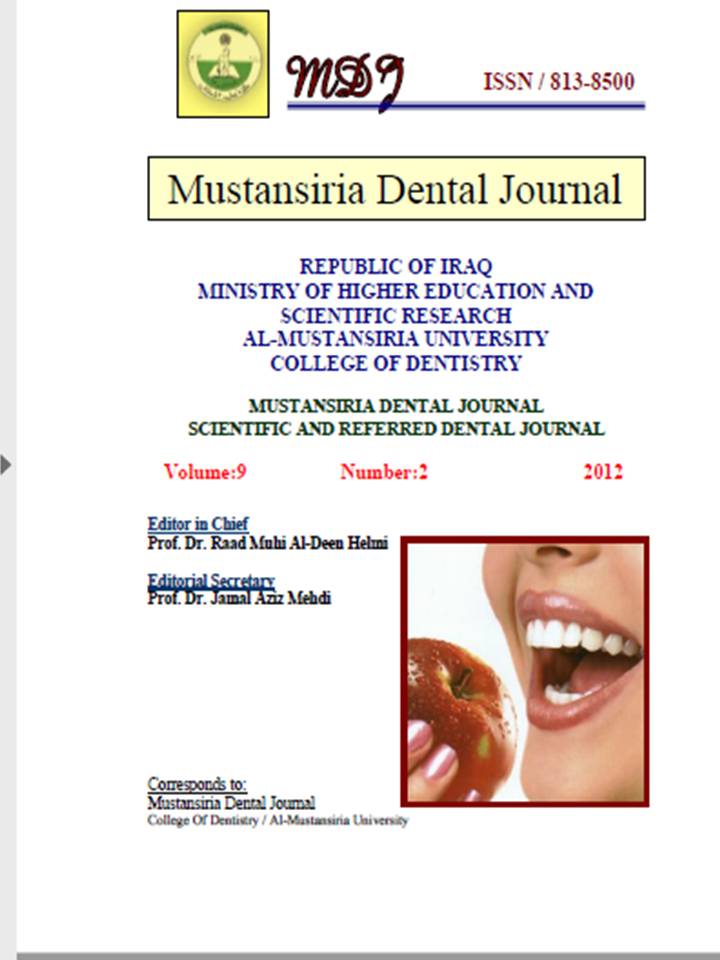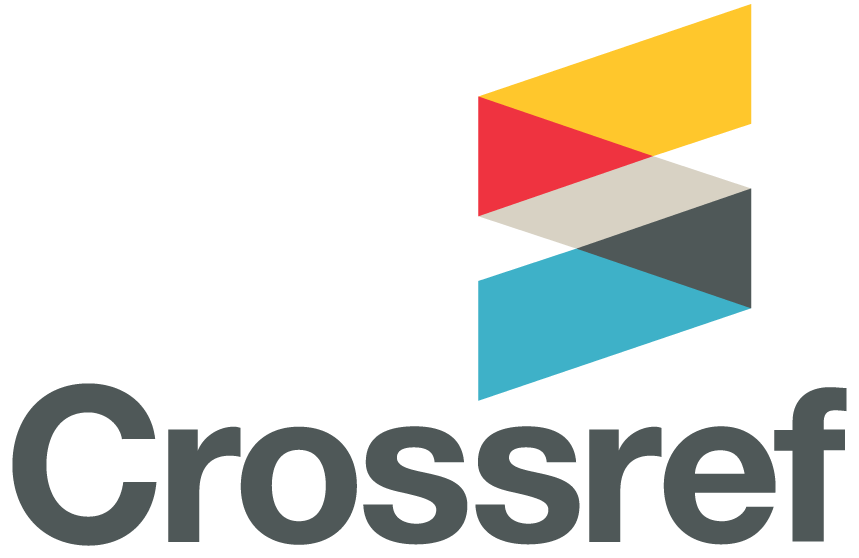Effects of bleaching agents on three different bonding agents in Cl.V composite resin restoration (in vitro comparative study)
DOI:
https://doi.org/10.32828/mdj.v9i2.256Abstract
Bleaching the discolored teeth may affect the tooth/composite interface. This
action found to be differing when different bonding agents were used.
Aim of the study was to evaluate the effect of vital tooth bleaching on
microleakage of existent class V composite resin restorations bonded with three dental
bonding agents.
Class V cavities were prepared on buccal surfaces of 60 intact, extracted human
mandibular premolar teeth with gingival margins in cementum and occlusal margins
in enamel, then these 60 teeth were randomly divided into 3 groups. Cavities in each
group were treated with one of the following bonding agents: AdperTM Single Bond
Pluse Adhesive (3M-ESPE) [group A], Tetric N-Bond (ivoclar, vivadent) [group T]
and Stae (SDI) [group S]. All teeth were restored with Tetric N-Ceram light activated
composite material. Each group was equally subdivided into control [AC, TC and SC]
and bleached [AB, TB and SB] subgroups (n = 10). The bleached subgroups were
bleached with 8% carbamide peroxide (Pola Paint, SDI, Australia) for 30 minutes
twice a day for 14 days (according to the manufacturer's instruction). Microleakage
scores were evaluated on the incisal and cervical walls. Data were analyzed using
Paired –Samples t- test.
Bleaching with carbamide peroxide paint significantly increased the microleakage
of composite restorations in Stae group at dentinal walls (P ≤0.05). Bleaching had no
effect on microleakage of restorations in the AdperTM Single Bond Plus Adhesive and
Tetric N-Bond groups.
Vital tooth bleaching with carbamide peroxide paint has an adverse effect on
marginal seal of dentinal walls of existent composite resin restorations bonded with
Stae adhesive

Downloads
Published
Issue
Section
License
The Journal of Mustansiria Dental Journal is an open-access journal that all contents are free of charge. Articles of this journal are licensed under the terms of the Creative Commons Attribution International Public License CC-BY 4.0 (https://creativecommons.org/licenses/by/4.0/legalcode) that licensees are unrestrictly allowed to search, download, share, distribute, print, or link to the full texts of the articles, crawl them for indexing and reproduce any medium of the articles provided that they give the author(s) proper credits (citation). The journal allows the author(s) to retain the copyright of their published article.
Creative Commons-Attribution (BY)








